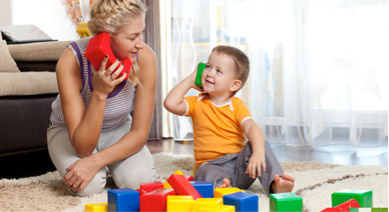I had always heard of the phrase ‘never say never’ and didn’t really put much thought to it, until recently. My husband and I planned for an early pregnancy as both of us loved kids and wanted to start a family soon. I had a normal pregnancy and our beautiful baby, Joe turned out to be physically healthy, but he had a problem.

Joe had a developmental disorder called autism…
I had almost given up hope when my husband came up with a lot of data on how an autistic child could lead a normal life and indulge in self-enthused learning, despite the setbacks. We read and read some more to discover something called ‘Floortime Therapy’.
Getting a child to be socially ‘normal’ when he has special needs can get very challenging.
Floortime Therapy is based on the concept of inducing learning with the help of natural instincts and interests of the autistic child. These interests constitute the easiest way to make autistic children learn. The next step involved challenging their learning capacities by taking it a notch higher, while keeping them occupied.
At first we started with the Floortime Therapy sessions at home, and observed that Joe started responding quickly to the things he liked, and at a later stage, we thought that it would be best to take professional help in school. We did a lot of research and settled on a school that had the best reviews on learning through Floortime Therapy.
This school had adopted Floortime Therapy, based on the Developmental, Individual Difference, and Relationship-based model.
This was an upgraded form of the therapy we provided at home, wherein school teachers made sure that the learning process was based on the individual capacities of the child and the syllabus is programmed in the same manner.
It is because of such practices that my child has been getting individual attention and learning has become easy for him today.